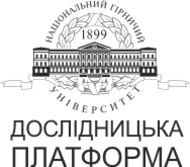№80-12
Determination of the shear angle during chip formation through the components of the cutting force
O. Voichyshen1
1Dnipro University of Technology, Dnipro, Ukraine
Coll.res.pap.nat.min.univ. 2025, 80:123–130
Full text (PDF)
https://doi.org/10.33271/crpnmu/80.123
ABSTRACT
Purpose. To make comparative calculations for the shear angle according to the most common formulas of well-known authors and to derive a new simplified formula for determining the shear angle during chip formation on the example of machining for certain groups of steels.
Methods. The study is based on the use of analytical and probabilistic methods for calculating the shear angle using an empirical formula based on the cutting force components at a sharp blade and a constant value of the friction-shear coefficient, which adequately corresponds to the values of the most common formula based on the chip thickening coefficient.
Findings. The formula for determining the shear angle in the chip formation zone was obtained. The constant value of the friction-shear coefficient for certain groups of steels was previously established. Compared to steel 45, the more ductile austenitic steel 12H18N9T has lower values of the friction-shear coefficient. As the cutting speed and blade rake angle increase, the shear angle increases accordingly.
The originality. The parametric relationship of chip formation angles was studied and established. Functional dependences of the cutting force components on the operating and geometric parameters of the cutting process were developed, the constancy of the friction-shear coefficient in the shear plane was established, and a new formula for determining the shear angle was derived. This makes it possible to determine these angles without the use of laborious dynamometry of the cutting force components at a sharp cutter blade during machining of a part.
Practical implementation. The use of an empirical formula for calculating the shear angle eliminates the experimental determination of the chip thickening coefficient, and due to the method of “reverse” calculation of the cutting force components with a sharp blade, it eliminates the laborious dynamometry of the components of the cutting force in each case and for individual groups of machining materials.
Keywords: metalworking, chip formation, shear angle, cutting force, friction-shear coefficient, cutting speed, leading angle.
References
1. Yakovenko, I. E., Permiakov, O. A., & Fesenko, A.V. (2022). Tekhnolohichni osnovy mashynobuduvannia: navchalnyi posibnyk dlia studentiv spetsialnostei 131 Prykladna mekhanika, 133 Haluzeve mashynobuduvannia. NTU «KhPI».
2. Dobrianskyi, S.S., & Malafieiev, Yu.M. (2020). Tekhnolohichni osnovy mashynobuduvannia [Elektronnyi resurs] : pidruchnyk dlia studentiv spetsialnostei 131 Prykladna mekhanika, 133 Haluzeve mashynobuduvannia. KPI im. Ihoria Sikorskoho.
3. Budiak, R.V., Hiosviahenko, E.K., Shvets, L.V., & Zhuchenko, H.A. (2020). Konstruktsiini materialy i tekhnolohii: navch. posib. FOP T.P. Baranovska.
4. Kravchenko, Yu., & Derbaba, V. (2020). Empirical definition of the shearing angle and chip-edge contact length when cutting. Collection of Research Papers of the National Mining University, 63, 123–133. https://doi.org/10.33271/crpnmu/63.123
5. Kravchenko, Yu.H., & Derbaba, V.A. (2022). Sposib vyznachennia kuta zsuvu pry struzhkoutvorenni. (Patent No 126198).
6. Derbaba, V., Patsera, S., & Hryhorenko, V. (2022). Features of mechanical processing of wear-resistant cast iron. Collection of Research Papers of the National Mining University, 71, 217–230. https://doi.org/10.33271/crpnmu/71.217
7. Kravchenko, Y., Derbaba, V., & Smagin, D. (2020). Determination and relationship between shift and friction angles in chapter formation. Collection of Research Papers of the National Mining University, 61, 193–201. https://doi.org/10.33271/crpnmu/61.193
8. Shcherbyna, Y., Derbaba, V., & Kozechko, V. (2021). Resistance criteria of a cutting tool for high-speed processing. Collection of Research Papers of the National Mining University, 67, 77–95. https://doi.org/10.33271/crpnmu/67.077




